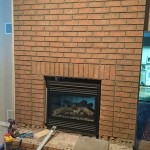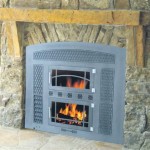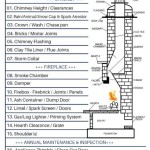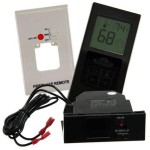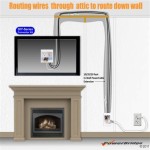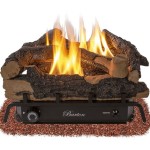Ventless Gas Fireplace Stoves: A Comprehensive Overview
Ventless gas fireplace stoves offer a convenient and aesthetically pleasing alternative to traditional wood-burning fireplaces and vented gas models. These appliances operate without the need for a chimney or flue, making them a suitable option for homes where installing a conventional venting system is impractical or cost-prohibitive. However, the operation and safety considerations of ventless gas fireplace stoves require careful consideration before purchase and installation. This article provides a comprehensive overview of these appliances, encompassing their functionality, benefits, limitations, safety features, and installation requirements.
The primary function of a ventless gas fireplace stove is to provide supplemental heat to a designated area. Unlike central heating systems that distribute warmth throughout an entire building, ventless stoves are designed to heat a single room or zone. They achieve this by directly transferring heat into the surrounding air through infrared radiation and convection. The efficiency of this direct heating method contributes to the energy-saving potential of these stoves.
Fueled by either natural gas or liquefied petroleum gas (LP), ventless stoves burn the fuel cleanly, converting the majority of the gas into heat. This combustion process generates water vapor and small amounts of carbon dioxide, which are released directly into the room. The design of these appliances incorporates oxygen depletion sensors (ODS) to monitor the oxygen levels in the room and automatically shut off the gas supply if oxygen levels fall below a safe threshold, mitigating the risk of carbon monoxide poisoning.
The appeal of ventless gas fireplace stoves extends beyond their heating capabilities. They often feature realistic simulated flames and ember beds, creating a visual ambiance that mimics the charm of a traditional fireplace. Various styles and designs are available, ranging from contemporary to traditional, allowing homeowners to select a model that complements their interior décor.
Key Point 1: Operational Principles and Components
Understanding the operational principles of ventless gas fireplace stoves is crucial for evaluating their suitability and ensuring safe operation. The core of the stove comprises the burner assembly, the gas valve, the pilot light, the thermocouple, and the oxygen depletion sensor (ODS). The burner assembly is where the gas is combusted, producing heat and the visible flame. The gas valve regulates the flow of gas to the burner, controlling the flame height and heat output. The pilot light provides a continuous flame that ignites the main burner when the stove is turned on.
The thermocouple is a safety device that senses the presence of the pilot light flame. If the pilot light is extinguished, the thermocouple shuts off the gas supply, preventing the accumulation of unburned gas. The ODS is arguably the most critical safety component. It continuously monitors the oxygen level in the room. If the level drops to a predetermined threshold (typically 18%), indicating insufficient ventilation, the ODS shuts off the gas supply to the burner, preventing the formation of dangerous levels of carbon monoxide.
The combustion process in a ventless gas fireplace stove is designed to be highly efficient. Modern models often incorporate advanced burner technologies that maximize fuel efficiency and minimize emissions. However, all combustion processes produce some byproducts, including water vapor, carbon dioxide, and trace amounts of carbon monoxide. Proper ventilation is essential to ensure that these byproducts do not accumulate to harmful levels. While the ODS provides a crucial safety net, it is not a substitute for adequate ventilation.
The aesthetic appeal of ventless gas fireplace stoves is enhanced by features such as ceramic logs or glass beads that simulate the appearance of a real wood fire. These decorative elements are designed to withstand the high temperatures generated by the burner and to distribute heat effectively. Many models also include a blower fan that circulates warm air into the room, improving heat distribution and efficiency.
Key Point 2: Advantages and Disadvantages
Ventless gas fireplace stoves present several advantages over traditional wood-burning fireplaces and vented gas models. One of the most significant benefits is the ease of installation. Since they do not require a chimney or flue, ventless stoves can be installed in a wide range of locations, including rooms without existing fireplaces. This eliminates the expense and complexity of building a chimney, making them a more affordable option for many homeowners.
Another advantage is their high energy efficiency. Because the heat is directly transferred into the room, minimal heat is lost through venting. This can result in significant energy savings compared to vented fireplaces, which lose a substantial portion of their heat up the chimney. The zone heating capability of ventless stoves also allows homeowners to heat only the rooms they are using, further reducing energy consumption.
The aesthetic appeal of ventless gas fireplace stoves is another compelling factor. They offer the ambiance of a traditional fireplace without the mess and hassle of wood burning. The realistic simulated flames and ember beds create a cozy and inviting atmosphere, enhancing the overall appeal of the room.
Despite their advantages, ventless gas fireplace stoves also have limitations. The primary concern is the impact on indoor air quality. While the ODS provides a crucial safety mechanism, the combustion process inevitably releases water vapor, carbon dioxide, and trace amounts of carbon monoxide into the room. This can be problematic for individuals with respiratory conditions or sensitivities to indoor air pollutants. Proper ventilation is essential to mitigate this risk.
Another limitation is the potential for moisture buildup. The water vapor produced during combustion can increase the humidity levels in the room, which can lead to condensation, mold growth, and damage to building materials. Adequate ventilation is necessary to prevent excessive moisture buildup. Local building codes may restrict or prohibit the use of ventless gas fireplace stoves in certain areas due to concerns about indoor air quality and moisture buildup. It is imperative to consult with local authorities and building inspectors before installing a ventless stove.
Key Point 3: Safety Considerations and Installation Requirements
Safety is paramount when considering the installation and operation of ventless gas fireplace stoves. Adherence to manufacturer's instructions and local building codes is crucial to ensure safe and efficient operation. A qualified technician should perform the installation, ensuring that the gas connections are properly made and that the stove is properly positioned and secured.
Proper ventilation is essential. The manufacturer's instructions typically specify the minimum room size and ventilation requirements for the stove. It is crucial to provide adequate ventilation, such as opening a window or door, to ensure that the air in the room is properly circulated. The ODS should be tested regularly to ensure that it is functioning correctly. This can be done by simulating a low-oxygen condition and verifying that the stove shuts off the gas supply.
Carbon monoxide detectors should be installed in the room where the ventless stove is located, as well as in adjacent rooms. These detectors provide an additional layer of protection against carbon monoxide poisoning. Batteries should be replaced regularly, and the detectors should be tested frequently to ensure that they are functioning properly.
Regular maintenance is essential to ensure the safe and efficient operation of the ventless gas fireplace stove. The burner assembly should be cleaned periodically to remove any dust or debris that may accumulate. The pilot light should be inspected regularly to ensure that it is burning cleanly and steadily. The gas valve and other components should be inspected for leaks or damage.
It is important to be aware of the symptoms of carbon monoxide poisoning, which include headache, dizziness, nausea, and confusion. If anyone experiences these symptoms, they should immediately evacuate the premises and seek medical attention. The use of ventless gas fireplace stoves should be avoided in bedrooms or other sleeping areas, as the risk of carbon monoxide poisoning is higher during sleep.
Local building codes and regulations may restrict or prohibit the use of ventless gas fireplace stoves in certain areas. It is imperative to consult with local authorities and building inspectors before installing a ventless stove to ensure compliance with all applicable regulations. Insurance companies may also have specific requirements or restrictions regarding the use of ventless gas fireplace stoves. It is advisable to check with one's insurance provider to ensure that the stove is covered by the homeowner's insurance policy.
The placement of the ventless gas fireplace stove is also a crucial safety consideration. The stove should be positioned away from combustible materials, such as curtains, furniture, and paper products. The manufacturer's instructions will specify the minimum clearances required between the stove and combustible materials. These clearances must be strictly adhered to in order to prevent the risk of fire.
Children and pets should be supervised when the ventless gas fireplace stove is in operation. The surface of the stove can become very hot, posing a burn hazard. A safety screen or guard can be installed to prevent accidental contact with the hot surface. It is also important to educate children and pets about the dangers of the stove.
While ventless gas fireplace stoves offer a convenient and aesthetically pleasing heating solution, careful consideration must be given to their operational principles, advantages, disadvantages, safety features, and installation requirements. Understanding these aspects is essential for making an informed decision and ensuring the safe and efficient operation of these appliances.

Radiance Vent Free Gas Stove The Place

Empire Vent Free Stove Bedroom Approved Fine S Gas
:max_bytes(150000):strip_icc()/ventless-gas-fireplaces-4160746-hero-f9d4bdcd9bd446eb84406de306f790ba.jpg?strip=all)
How To Pick Out A Ventless Gas Fireplace

Ventless Gas Fireplace Vent Free Modern

50 Free Standing Ventless Gas Fireplace Visualhunt

Vent Free Gas Stoves At Com

Duluth Forge Dual Fuel Ventless Gas Fireplace 26 000 Btu Remote Control Antique White Finish 170105 The Home Depot

Empire Ventless Gas Stove Medium Vfd30cc Hvacdirect Com

Duluth Forge Dual Fuel Ventless Gas Fireplace 26 000 Btu T Stat Control Antique White Finish Com

Comparing Vent Free Gas Stoves Project Small House
Related Posts

